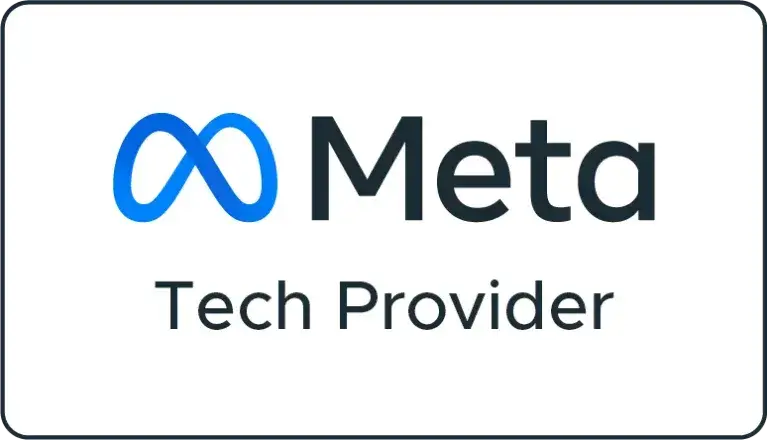Are you a retail business owner looking to take your online marketing efforts to the next level? Look no further! In today’s digital age, Google Shopping Ads have become an essential tool for boosting sales and driving traffic to your website. This ultimate Google Shopping Ads guide is your one-stop resource for understanding and leveraging the power of Google Shopping Ads. Whether you’re just getting started or already familiar with the concept, this comprehensive guide will provide you with valuable insights and actionable strategies to transform your retail business. From understanding the basics of Google Shopping Ads to optimizing your product listings for maximum visibility, we’ve got you covered. Get ready to unlock the potential of Google Shopping Ads and watch your sales soar to new heights. So, let’s dive in and discover the secrets to success in the world of online retail!

Introduction to Google Shopping Ads
In today’s digital world, online advertising is essential for businesses, especially retail stores. One powerful tool for retail businesses is Google Shopping Ads, also known as Product Listing Ads (PLAs). These ads allow stores to showcase their products directly in Google search results when people look for related keywords. The ads include product images, titles, prices, and store names.
Ultimate Google shopping Ads Guide : What are Google Shopping Ads?
Google Shopping Ads, also known as Product Listing Ads (PLAs), are a type of advertising format that allows businesses to display their products directly on Google’s search results page. Unlike traditional text-based ads, Google Shopping Ads showcase product images, titles, prices, and a brief description, making them highly visual and appealing to potential customers. These ads not only appear on the search results page but also on Google Shopping, YouTube, and the Google Display Network, ensuring maximum visibility for your products. With Google Shopping Ads, you can reach a broader audience and connect with customers who are actively looking to make a purchase.
Google Shopping Ads work based on a pay-per-click (PPC) model, where advertisers only pay when someone clicks on their ad. This makes it a cost-effective advertising solution, especially for small and medium-sized businesses with limited marketing budgets. By leveraging Google’s vast user base and advanced targeting capabilities, you can showcase your products to the right audience at the right time, increasing the likelihood of generating qualified leads and driving sales.
Benefits of using Google Shopping Ads
There are numerous benefits to incorporating Google Shopping Ads into your online marketing strategy. Let’s explore some of the key advantages that make these ads a game-changer for retail businesses:
- Increased visibility: Google Shopping Ads appear prominently at the top of the search results page, above organic listings and text-based ads. This prime placement ensures that your products catch the attention of potential customers and stand out from the competition.
- Highly targeted traffic: Google Shopping Ads allow you to reach customers who are actively searching for specific products or comparing prices. By targeting relevant keywords and optimizing your product listings, you can attract qualified traffic that is more likely to convert into sales.
- Enhanced user experience: With the visually appealing format of Google Shopping Ads, customers can quickly evaluate products based on their images, prices, and ratings. This streamlined shopping experience increases the chances of customers making informed purchasing decisions and reduces the risk of bounce rates.
- Improved conversion rates: Studies have shown that Google Shopping Ads have higher average click-through rates and conversion rates compared to text-based ads. The visual nature of these ads creates a stronger impact and captures the attention of potential customers, leading to a higher likelihood of them making a purchase.
- Detailed product information: Google Shopping Ads provide detailed information about your products, including images, titles, prices, and descriptions. This allows potential customers to get a comprehensive overview of your offerings before clicking on the ad, reducing the chances of irrelevant clicks and improving the quality of traffic.
By leveraging these benefits, retail businesses can significantly enhance their online presence, drive targeted traffic to their website, and ultimately boost sales. Now that we understand the basics of Google Shopping Ads and their advantages, let’s dive deeper into how they work.
How do Google Shopping Ads work?
Google Shopping Ads operate through a combination of the Google Merchant Center and Google Ads. The process involves setting up a product feed, creating campaigns, and optimizing your ads for maximum visibility and performance. Let’s break down the steps involved in running successful Google Shopping Ads:
Setting up Google Merchant Center
The first step in getting started with Google Shopping Ads is setting up a Google Merchant Center account. The Merchant Center is a platform that allows you to upload and manage your product data, ensuring that your inventory is up-to-date and accurate. To create an account, you’ll need to provide some basic information about your business, such as your website’s URL and contact details.
Once your Merchant Center account is set up, you’ll need to verify and claim your website to establish a connection between your online store and the Merchant Center. This verification process ensures that you have the necessary permissions to manage the product data associated with your website.
Creating a product feed
Next, you’ll need to create a product feed, which is a file that contains all the relevant information about your products. This file acts as the source of data for your Google Shopping Ads, and it needs to be regularly updated to reflect any changes in your inventory.
The product feed should include details such as the product title, description, price, availability, and unique identifiers like the brand, GTIN, or MPN. It’s crucial to ensure that your product data is accurate, complete, and optimized for relevant keywords to maximize visibility and attract the right audience.
Optimizing product data for Google Shopping Ads
To make the most of your Google Shopping Ads, it’s essential to optimize your product data. This involves strategically incorporating relevant keywords in your product titles and descriptions to increase the chances of your ads appearing for relevant search queries.
When optimizing your product data, it’s important to strike a balance between being descriptive and concise. Use clear and compelling language to highlight the key features and benefits of your products, while also ensuring that your titles and descriptions are concise and to the point.
Additionally, providing accurate and up-to-date information about your products, such as pricing and availability, is crucial to building trust with potential customers. Google uses this information to determine the relevance and quality of your ads, so it’s essential to keep your product data accurate and regularly updated.
Structuring your Google Shopping Ad campaigns
Once your product feed is optimized, it’s time to structure your Google shopping ad campaigns. Campaign structuring involves organizing your products into product groups based on similar attributes, such as category, brand, or custom labels. This segmentation allows you to have more control over your ad performance and bidding strategies.
By structuring your campaigns effectively, you can set different bids and budgets for specific product groups, ensuring that your advertising investment is allocated to the most profitable areas of your inventory. This level of granularity also enables you to optimize your campaigns based on performance data and make data-driven decisions to drive better results.
Setting a budget and bidding strategy
When it comes to Google Shopping Ads, setting a budget and bidding strategy is crucial to ensuring that you’re getting the most out of your advertising investment. Google Ads provides various bidding options, including manual CPC (cost-per-click) bidding and automated bidding strategies such as Target ROAS (return on ad spend) and Enhanced CPC.
The bidding strategy you choose should align with your advertising goals and budget. Manual CPC bidding gives you full control over how much you’re willing to pay for each click, while automated bidding strategies leverage machine learning algorithms to optimize bids based on your desired outcome, such as maximizing conversions or achieving a specific return on ad spend.
It’s important to regularly monitor and adjust your bidding strategy based on the performance data of your Google Shopping Ads. By analyzing metrics such as click-through rates, conversion rates, and average order values, you can identify areas for improvement and optimize your bidding strategy to drive better results.
Monitoring and optimizing your Google Shopping Ads
As with any digital marketing campaign, monitoring and optimization are crucial to ensuring the success of your Google Shopping Ads. Regularly reviewing the performance of your ads allows you to identify trends, make data-driven decisions, and optimize your campaigns for maximum ROI.
Key metrics to monitor include impressions, clicks, click-through rates, conversion rates, and return on ad spend. By analyzing these metrics, you can identify underperforming products or product groups, adjust your bids and budgets, and optimize your product data to improve ad performance.
It’s also important to leverage Google’s built-in reporting and analytics tools to gain deeper insights into the behavior and preferences of your target audience. By understanding which products are driving the most sales and which keywords are generating the most clicks, you can refine your targeting and optimization strategies to achieve better results.
Advanced strategies for Google Shopping Ads
Once you have a solid foundation in place, you can explore advanced strategies to further enhance the performance of your Google Shopping Ads. Here are a few tactics that can take your campaigns to the next level:
- Ad customizers: Ad customizers allow you to dynamically update your ad content, such as prices, promotions, and countdowns, based on specific attributes or user behavior. This level of personalization can significantly improve the relevance and effectiveness of your ads.
- Remarketing: Remarketing enables you to target users who have previously interacted with your website or products. By showing relevant ads to these users, you can re-engage them and increase the chances of them making a purchase.
- Smart Shopping campaigns: Smart Shopping campaigns leverage machine learning algorithms to optimize your campaigns across multiple platforms, including Google Search, Display Network, YouTube, and Gmail. These campaigns automatically adjust bids and placements to maximize conversions and achieve your desired return on ad spend.
- Promotions and discounts: Offering exclusive promotions and discounts through your Google Shopping Ads can help attract more customers and incentivize them to make a purchase. Experiment with different types of promotions, such as free shipping, percentage discounts, or limited-time offers.
By implementing these advanced strategies, you can further refine your Google Shopping Ads and stay ahead of the competition. However, it’s important to test and measure the impact of these tactics to ensure that they align with your business goals and deliver the desired results.
Common mistakes to avoid with Google Shopping Ads
While Google Shopping Ads offer tremendous potential for retailers, there are some common mistakes that can hinder your success. By being aware of these pitfalls, you can avoid costly errors and optimize your campaigns effectively:
- Poor product data: Inaccurate or incomplete product data can negatively impact the visibility and performance of your Google Shopping Ads. Ensure that your product titles, descriptions, prices, and availability are accurate and regularly updated.
- Lack of optimization: Neglecting to optimize your product titles, descriptions, and bids can result in your ads being displayed for irrelevant searches or not reaching their full potential. Regularly analyze the performance data of your ads and make data-driven optimization decisions.
- Insufficient budget allocation: Setting a low budget or not allocating sufficient funds to your Google Shopping Ads can limit their reach and impact. Consider your advertising goals, competition, and desired return on investment when setting your budget.
- Ineffective campaign structure: Poorly structured campaigns can make it difficult to manage and optimize your Google Shopping Ads effectively. Take the time to plan and organize your campaigns based on relevant product attributes to ensure better control and performance.
- Ignoring performance data: Failing to regularly monitor and analyze the performance data of your Google Shopping Ads can lead to missed opportunities for optimization and improvement. Make it a habit to review your data and make data-driven decisions to drive better results.
By avoiding these common mistakes, you can set your Google Shopping Ads up for success and maximize their impact on your retail business. Now, let’s take a look at some real-world case studies that illustrate the power of Google Shopping Ads.
Case studies of successful Google Shopping Ad campaigns
Case Study 1: XYZ Electronics
XYZ Electronics, a leading online retailer of consumer electronics, wanted to increase their online visibility and drive more sales. By leveraging Google Shopping Ads, they were able to achieve impressive results. With optimized product data, structured campaigns, and a strategic bidding strategy, XYZ Electronics increased their click-through rates by 35% and saw a 50% increase in conversions. The enhanced visibility and targeted traffic generated by their Google Shopping Ads resulted in a significant boost in sales and revenue for the company.
Case Study 2: ABC Fashion
ABC Fashion, a boutique fashion retailer, wanted to reach a larger audience and expand their customer base. By implementing Google Shopping Ads, they were able to showcase their unique collection of clothing and accessories to a highly targeted audience. By optimizing their product data, creating compelling ads, and leveraging advanced strategies like ad customizers, ABC Fashion saw a 40% increase in click-through rates and a 25% increase in conversions. The increased visibility and improved ad performance helped ABC Fashion establish themselves as a prominent player in the fashion industry.
These case studies highlight the potential of Google Shopping Ads to transform retail businesses and drive significant results. By implementing best practices, optimizing your campaigns, and staying ahead of the competition, you can unlock the full potential of Google Shopping Ads for your business.
Tools and resources for managing Google Shopping Ads
Managing Google Shopping Ads effectively requires the right tools and resources. Here are some essential tools and resources that can help streamline your campaign management and optimization processes:
- Google Merchant Center: The Google Merchant Center is the central hub for managing your product data and monitoring the performance of your Google Shopping Ads. It provides a range of features and tools to help you optimize your feed, set up remarketing campaigns, and track key metrics.
- Google Ads: Google Ads is the platform where you create and manage your Google Shopping Ad campaigns. It offers a wide range of features, targeting options, and reporting tools to help you maximize the impact of your ads.
- Google Analytics: Google Analytics provides powerful insights into the behavior and preferences of your website visitors. By integrating Google Analytics with your Google Shopping Ads, you can gain deeper insights into the performance of your ads and make data-driven optimization decisions.
- Feed management tools: There are various feed management tools available that can help automate the process of managing and optimizing your product feed. These tools can save time and ensure that your product data is always accurate and up to date.
- Industry blogs and forums: Staying up to date with the latest trends and best practices in Google Shopping Ads is essential for success. Follow industry blogs, forums, and communities to stay informed and learn from the experiences of other retailers.
By leveraging these tools and resources, you can streamline your Google Shopping Ad management processes, gain valuable insights, and optimize your campaigns for better results.
Conclusion
Google Shopping Ads have revolutionized the way retailers advertise their products online. With their visually appealing format, advanced targeting capabilities, and cost-effective pricing model, Google Shopping Ads offer immense potential for boosting sales and driving qualified traffic to your website.













